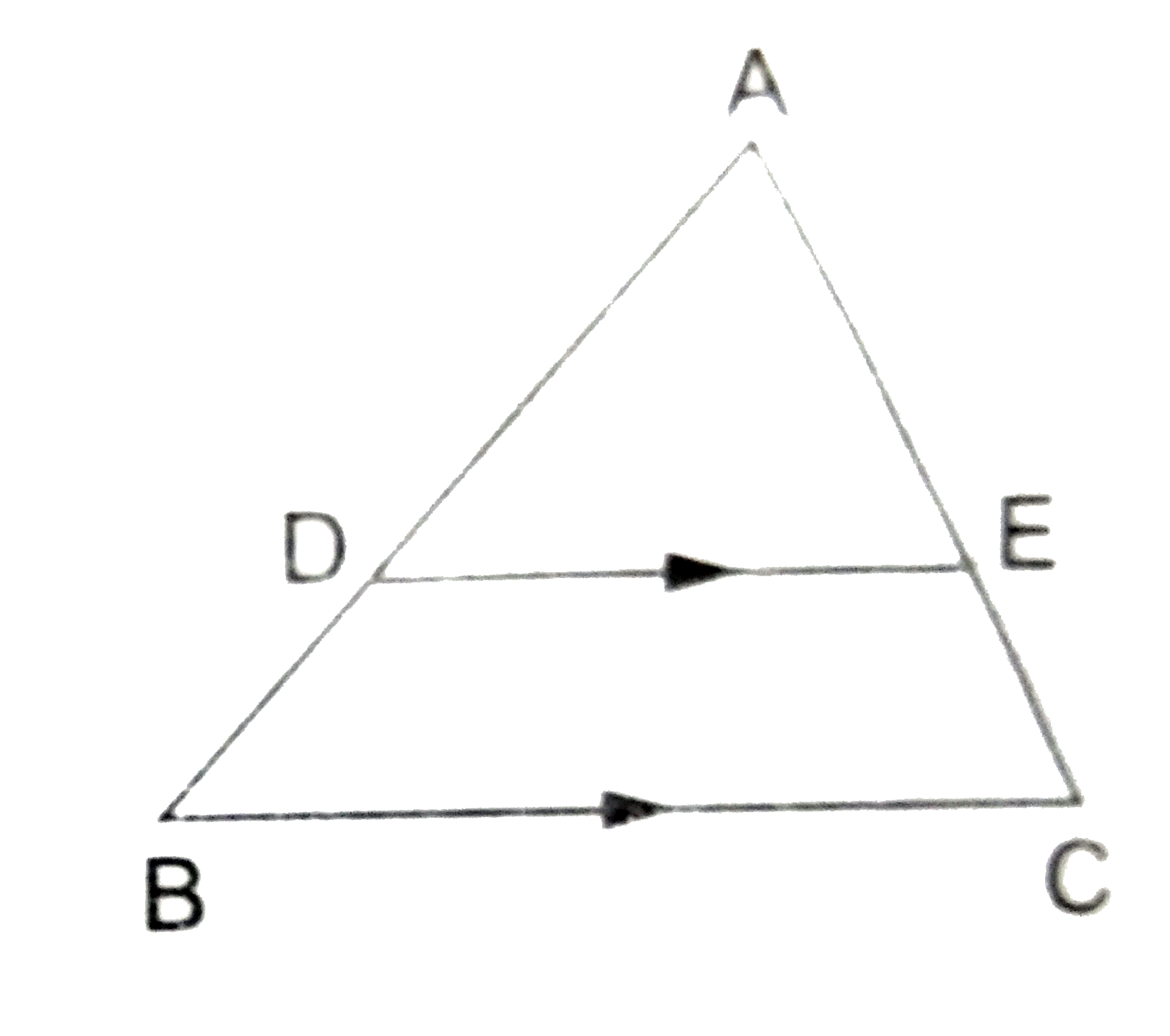The vertices of a ΔABCareA(4,6),B(1,5)andC(7,2). A line is drawn to intersect side AB and AC at D and E respectively, such that ADAB=AEAC=14. Calculate the area of ΔADE and compare it with the area of ΔABC.
Given,
ADAB=AEAC
=14
Thus,
ADDB=AEEC
=13
For, D , x=mx2+nx1m+n=1.1+3.41+3=234
y=my2+ny1m+n=1.5+3.61+3=194
Then , D=(134,234)
For, E , x=1.7+3.41+3=194
y=1.2+3.61+3=5
then , E =(194,5)
Area of △ABC = 12[4(5−2)+1(2−6)+7(6−5)]=152
Area of △ADE = 12[4(234−5)+134(5−6)+194(6−234)]=94
then ,
Ar(△ADE)Ar(△ABC) =⎛⎝94152⎞⎠=310
Similar Questions
The vertices of a ΔABCareA(4,6),B(1,5)andC(7,2). A line is drawn to intersect side AB and AC at D and E respectively, such that ADAB=AEAC=14. Calculate the area of ΔADE and compare it with the area of ΔABC.
View SolutionThe vertices of ABC are A(4, 6), B(1, 5) and C(7, 2) . A line is drawn to intersect sides AB and AC at D and E respectively such that ADAB=AEAC=14 . Calculate the area of ADE and compare it with the area of ABC .
View Solution
Knowledge Check
- Question 1 - Select One
In ΔABC, the line parallel to BC Intersects AB and AC at P and Q respectively. If AB:AP=5:3then AQ:QCis :
A3:2B2:3C3:5D1:2
The vertices of a ABC are A(5,5),B(1,5)andC(9,1) . A line is drawn to intersect side AB and AC at P and Q respectively, such that APAB=AQAC=34. Find the length of the line segment PQ.
View SolutionIf a line intersects sides AB and AC of a ΔABCat D and E respectively and is parallel to BC, prove that ADAB=AEAC
View SolutionThe vertices of a ΔABC are A(3,0),B(0,6)andC(6,9). A straight line DE divides AB and AC in the ration 1:2 at D and E respectively, prove that ΔABCΔADE=9
View SolutionIn △ABC,D and E are points an the sides AB and AC repectivaly such that DEllBC . If ADDB=34 and AC=15 cm . Find AE.
View SolutionIn an isosceles triangle ABC with AB=AC, a circle passing through B and C intersects the sides AB and AC at D and E respectively. Prove that DEBC
View SolutionIn an isosceles triangle ABC with AB=AC, a circle passing through B and C intersects the sides ABandAC atDandE respectively. Prove that DECB.
View SolutionIn a ΔABC, if DE is drawn parallel to BC, cutting AB and AC to D and E respectively such that AB=7.2cm,AC=6.4cmandAD=4.5cm. Then, AE=?
 View Solution
View Solution

